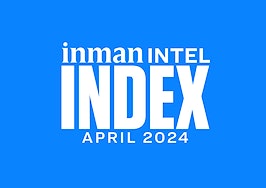Lew Sichelman is a seasoned writer with 50 years of covering the housing and mortgage markets under his belt. His biweekly Inman column publishes on Tuesdays.
Cleaning off my desk after a long, slow summer spent largely at the beach, I found these items of interest:
New statistics to consider when buying a house
Willie Nelson warned mothers not to allow their sons to grow up to be cowboys. And real estate agents should warn their clients not to put their every last dollar into buying a house.
Why? According to a study by the JPMorgan Chase Institute, buyers with post-closing liquidity of three months or more were five times less likely to default on their mortgages.
Specifically, the research found that borrowers with three or four mortgage payments’ worth of money in the bank had a three-year default rate of 0.3 percent. On the other hand, the default rate for those with less than the cash equivalent of one month’s payment was 1.8 percent.
Although neither of those is particularly high, the difference is striking — so much so that buyers should consider slowing the purchase process down until they’ve built up a cushion, should something go wrong after they move in. That doesn’t happen often, but some extra money in the bank is great insurance should a layoff, illness or death in the family occur.
Opportunities in opportunity zones
Brokers and agents who are looking for a good place to hang their shingles might want to consider one of the nearly 3,100 opportunity zones established by the Tax Cuts and Jobs Act of 2017. According to Attom Data Solutions, median homes prices in most of them are well below the national average.
Opportunity zones provide federal capital gains tax advantages for investments made in designated areas that local political leaders deemed in need of more development.
Attom, a provider of property data, found that roughly 80 percent of those zones had median home prices in the second quarter of 2019 that were below the national figure of $266,000 and that half had median prices of less than $150,000.
Within the zones themselves, 86 percent registered median second quarter 2019 sales prices that were less than the median for the surrounding Metropolitan Statistical Area; roughly 26 percent had median sales prices less than half the MSA figure. Only 14 percent had median sales prices that were equal to or above the median sales price in the MSA.
“The differences between these and other areas in most parts of the nation are stark,” Attom’s Chief Product Officers, Todd Teta, said in a press release. “The numbers provide key benchmarks for how much room there is for these areas to grow and how much new investment they need.”
Watch out for zombie houses lurking in the most unlikeliest of places
Zombieland II will be in the theaters next month with all the original cast. Zombieland was a great comedy back in 2009, and part deux promises to be the same. But zombie houses are no laughing matter. And they are everywhere.
In its latest report on the subject, Attom counts nearly 10,000 houses nationwide that are facing foreclosure and have been vacated by their owners. The largest number are in New York and Florida, with more than a thousand each.
But when looking at the problem by ZIP code, it is somewhat surprising that South Carolina resort Hilton Head Island tops the list and that Myrtle Beach, its sister resort to the north, isn’t far behind.
Aging in place
Will our seniors have enough money on hand — or equity in their homes — to pick up stakes and move to a more moderate climate or closer to their offspring and grandkids, or will they even be able to remain comfortably in place?
Perhaps not, according to research by MagnifyMoney, which found that some 52 percent of respondents admit to tapping their retirement savings account early for a purpose other than retiring.
Nearly 1 in 5 of those who have raided their savings used the money for a downpayment on a house. That’s laudable, at least as far as real estate interests are concerned. But almost 1 in 4 did so to pay off debt, 1 in 8 to pay someone’s college tuition and 1 in 10 to cover medical expenses.
Worse perhaps, the 3 out of 4 respondents haven’t any idea how much they have put away toward retirement. And yikes again: One in four have never even thought about how much they’ll need to have squirreled away when the time comes to hang it up.
For the study, MagnifyMoney, an informational website operated by LendingTree, commissioned Qualtrics to poll 1,029 Americans, with the sample base proportioned to represent the general population.
Lenders are off to the bank
Don’t know what kind of money realty brokers and agents are making. But lenders are doing well, according to the Mortgage Bankers Association.
Independent mortgage companies (those not owned by a banking institution) earned $1,675 per loan in the second quarter compared to $285 per loan in the first quarter and $580 per loan in last year’s second quarter.
Production profits in the second quarter were the best MBA has seen since the third quarter of 2016, when lenders made $1,773 per loan. Marina Walsh, the MBA’s vice president of industry analysis, said in a press release that profits rose largely because of a $1,500 per loan decline in production expenses.
Mortgage fraud on the wane, but agent beware
Mortgage fraud appears to be on the wane, but appearances can be deceiving. And when there’s loan fraud, the chances are good that the shyster is pulling the wool over someone or an agent’s eyes as well. So agent beware.
According to the First American’s Loan Application Defect Index mortgage hoaxes are going down largely because of the mix in loan applicants. Because of the recent dip in loan rates, refinancing has taken center stage. And since these loans usually comes with “significantly lower” defect and misrepresentation risk, the index has gone down.
This phenomenon almost always occurs during refinance booms. But that doesn’t mean the folks who lie on their loan applications have disappeared or that they’ve pulled in their horns.
They’re out there, inflating their incomes, saying they intend to live in the houses they’re buying when they’re not, hiding past foreclosures or bankruptcies, or otherwise trying to hoodwink lenders, agents and anyone else who will buy their falsehoods.
Lew Sichelman is a seasoned writer with 50 years of covering the housing and mortgage markets under his belt. His biweekly Inman column publishes on Tuesdays.













